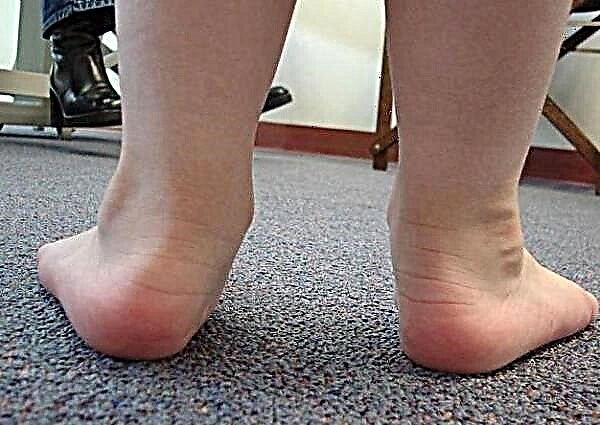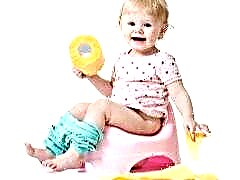
When moms did not have disposable diapers at their disposal, the issue of potty training was less acute. To save herself from unnecessary washings, the mother began to potty train the baby from an early age. In a year, most babies knew perfectly well what it was and why a pot was needed, especially since the children themselves were uncomfortable in wet cloth diapers and tights. As soon as disposable diapers appeared, mothers had less hassle and worries, as well as washing. And the children have become much more comfortable and more pleasant, because the diaper can be wet for several hours without giving the child any unpleasant sensations.
As a result, the age of potty training has systematically shifted - modern children get to know the potty much later than their parents did in their childhood. Therefore, the question of how to teach a child to go to the potty at 2 years old and after two years does not shock anyone. In this article we will tell you how to teach your baby how to handle the pot on their own and reveal some secrets that will help mothers in such a difficult task.
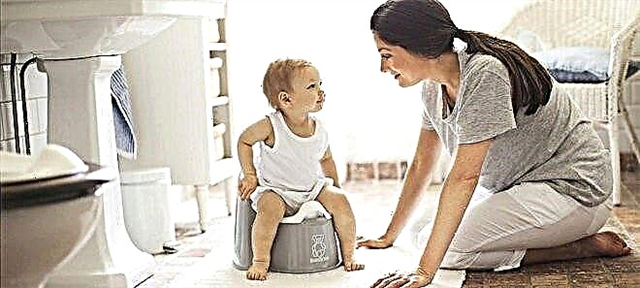
Baby's readiness
A clear sign of the "adulthood" of a child is the ability to independently use a potty or toilet bowl for great and small need. All mothers certainly want to see the baby big and independent. But up to a certain age, especially if there is no need to send the child to a nursery, it is more convenient for him and his mother to use disposable diapers. According to the established practice, this age is considered 2 years.
When the child reaches the age of two, the parents have a reasonable desire to stop spending the family budget on expensive diapers and instill in the child sanitary skills, without which it will be difficult to register with kindergarten or go on an exciting trip. At 2 years and later of this significant date, as a rule, a large-scale struggle with diapers unfolds, which is pretty exhausting for both adults and the confused toddler.
Before getting down to business, experts recommend assessing the degree of readiness of the toddler for the upcoming changes. Instilling a new skill will in any case be stressful for everyone involved in this process.
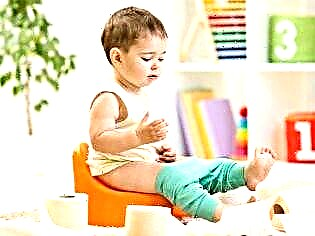
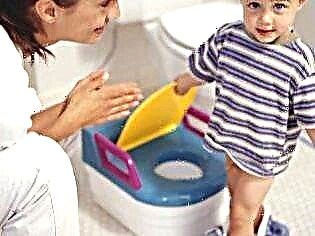
A child's readiness is assessed by several parameters. When a person is born, urination and defecation are unconditioned reflexes, which the child cannot control in any way, and for the time being it is not required. At a certain stage of development, the unconditioned reflex becomes conditioned, that is, the child associates the desire to pee or to empty the intestines with the action itself.
It is after the reflex becomes conditioned that you can try to start teaching the child. At an earlier age, it is possible to achieve associative urination in the pot by the command "pee-pee" from the baby, but when the reflex becomes conditioned, the baby may refuse to follow the commands and will again start doing his "business" in his pants.
The reflex becomes conditioned as the child grows, as the functions of his cerebral cortex and nervous system improve. The age at which the processes of formation of the reflex can be considered complete or almost complete is considered exactly two years of age. Thus, you can start preparing for the development of "toilet science" after the baby celebrates his second birthday.
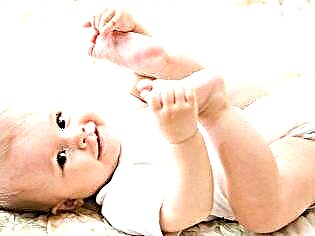

The readiness for planting on a pot is easy to assess. According to the world-famous pediatrician Yevgeny Komarovsky, it is enough to carefully observe the child for several days and honestly answer a few questions (if there are a majority of positive answers, you can try to instill new sanitary skills in the little one).
- Does the child have a formed bowel movement? Does he go big at about the same time every day?
- Can a toddler spend at least an hour and a half in a clean and dry diaper after a change? Does he manage to hold back urination at least during this time?
- Does the baby know the names of parts of his body, is he familiar with him, is he able to understand the names of items in his wardrobe (panties, pants, skirt, etc.)?
- Does he understand the meaning of the verbs "urinate" and "poop"? Does this process associate with these words?
- Is the baby irritated by a wet or dirty diaper, does he try to remove the diaper after a certain action?
- Can a child take off his pants, panties himself?
- Does the child have access to the toilet room? Does he enter it without fear and fear?
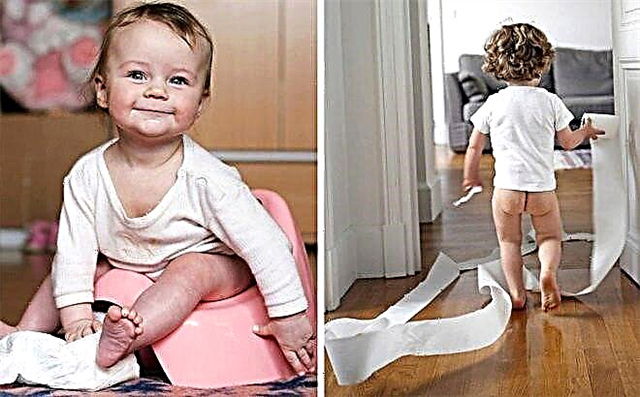
Children after 2 years old, as a rule, perfectly understand the speech of their parents. Even if they don't speak very well yet, their passive speech is developed enough to understand what exactly adults are saying. That is why it will be much easier for the child to explain why a new object called "pot" is needed and what needs to be done with it. If during the learning process the child resists, cries, protests, it would be better to postpone learning to a later time. Perhaps, after a few days or weeks, the baby will begin to perceive the pot and everything connected with it in a new way.
Parents' preparation is to find a week or two of free time, if they are working, and spend it with the baby. You will also need a reserve of patience and strength, because not everything will work out the first and even the second time.
At the time of the beginning of training, the child must be healthy, he must not be under the influence of certain stress factors, for example, moving, starting a visit to kindergarten, parting with one of the parents or their divorce.
The better and psychologically more comfortable the child feels at the very beginning of the training, the more likely the event will be a quick success.

Why do children refuse?
Often parents are faced with a situation where a two-year-old son categorically refuses the pot - he does not want to sit on it, does not come up to him and in every possible way tries to avoid his mother's attempts to introduce him to the pot more closely. What could be the reason for this behavior of a two-year-old? Let's look at things through the eyes of the baby himself.
- The pot is uncomfortable. If the parents did not take into account the requirements for choosing the first pot, which we will discuss below, it may turn out that the first experience of the child's "communication" with the pot turned out to be negative - the pot was cold, hard, too small or too large. After all, the pot can be unattractive and intimidating to the child.
- Fear. The child, who has already been tried to force to sit on the pot, and by force and screams, is afraid of the pot, since this accessory is not associated with safety and pleasure. Fear can manifest itself not only in the refusal to sit on the pot. Often a child who has already been taught to sit on it just sits on it, does not poop or pee, but as soon as the parents lift him from the pot, he immediately relieves both needs in his pants.
- The child is not ready. This applies to both physical and psychological readiness. He simply does not associate the pot with toilet needs, and therefore does not ask for it. Readiness is a relative concept. A child may be ready at exactly 2 years of age, or may not show signs of readiness at 2.6 or 2.8 years.
- Stress. The toddler may be sensitive to the beginning of learning. Parents refuse to use diapers that are usual for the baby, as a result of which there is a way out of the so-called zone of psychological comfort.


Children 2 years old and older strive for independence, they already know how to defend their interests and what they want, so the protest against the pot can be strong, pronounced and lasting. The main thing here is not to lose patience, not to retreat, not to break loose as an adult. As a child once got used to a disposable diaper, he will gradually get used to and adapt to the potty. And this must be understood.
Not a single child has ever gone to first grade without being able to write and poop where the sanitary and social norms of behavior adopted in our society require it.
The more parents demonstrate upset and worries about the child's rejection of an object such as a pot, the more the baby will fenced off from it, because in his little head a relationship is quickly formed between this object and the upset look of his mother, which he in no way wants upset.
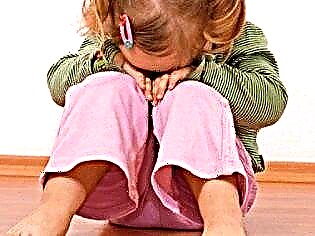
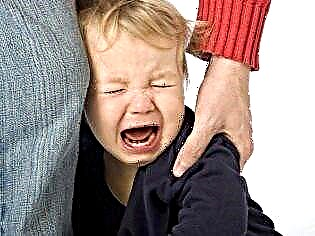
How to teach?
There are several ways to potty train at 2 years old. There are fast, slow and gentle, versatile ways. To begin with, parents need to know exactly how much time they have. If the time is right to take the child to kindergarten, there is a place that others can take if they delay.
Or maybe the family decided to go on a trip and tickets have already been bought, then you can use the quick way. If you have time, it suffers, then it is better to take a slower, but less psychologically traumatic path or use a universal method.
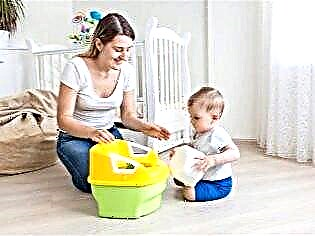
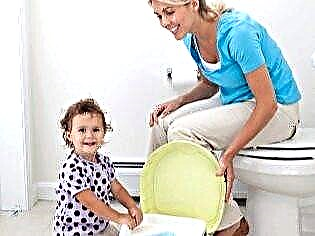
Express method
The quick method was invented by children's doctor Gina Ford. Her method is intended for two-year-olds, as well as children from 1.5 to 2.5 years old. The doctor suggested that teaching toilet "science" can be "fit" in just 7 days, a child who is ready to learn can easily learn to write and walk in a big pot in just a week. On the first day, Dr. Ford advises to start training in the morning. Having taken off the diaper, which is full at night, the child is immediately "presented" with a new "friend" - a beautiful pot, which must be preheated in warm water. The baby should be seated on a pot and kept on it for about 10 minutes. Of course, mom will have to think in advance what she and the child will do in these 10 minutes.
You should also prepare for the fact that the child will refuse to sit on the pot, and there is nothing unexpected or strange in this. Bring the toy your baby loves with you in advance. It could be his nighttime toy with which he sleeps. The right to the first landing on the pot can be given to a teddy hare or a bear cub.
Imperceptibly for the baby, pour some water into the pot with the sitting hare, then show the result of the hare's "efforts" to the little one, praise the hare from the heart and invite the child to repeat his act.
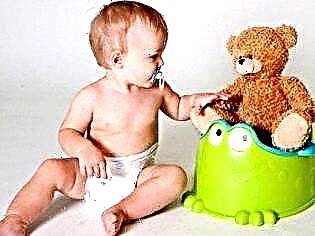
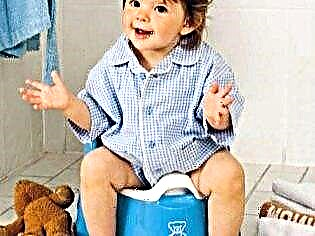
Of course, the game will interest the kid, but the kid may refuse to sit down and repeat the "feat". And there is nothing strange about that either. Don't insist. Do not put a diaper on your baby. Throughout the first day, the baby, and if necessary, his bunny, you need to offer the pot every 15-20 minutes. Believe me, at the end of the day, the baby will do what follows. At this moment, do not forget to arrange a small "celebration" - praise the child, treat him with something tasty, tell all family members with the child, what a great fellow he is. The child will quickly understand that such actions are good and constructive.
Of course, there will be a few "misses" throughout the day. The kid will wet his pants, himself experiencing a lot of inconvenience because of this. Try to be calm. Gina Ford recommends restraining emotions, not scolding the child, but in a firm and even voice, changing his pants, express your displeasure with the baby's act. The main thing is to do it kindly, without the slightest hint of irritation and anger. At night after the first day, the child is put on a disposable diaper.
On the second day, the acquired skills should be consolidated. The pot is still offered every 15-20 minutes. You can diversify the actions by taking the pot together into the toilet, pouring it out.
Allow your child to flush the water, all babies, without exception, simply love to press the toilet button. If the child has already learned what to do with the pot, try to do without the plush bunny helper.
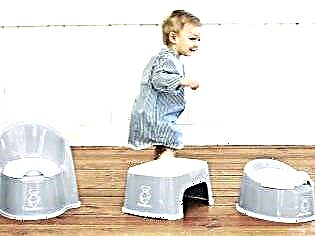
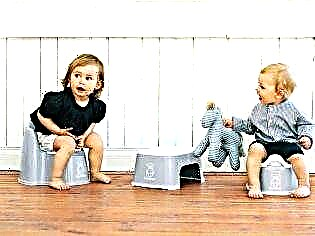
On the third day, mother and child go for a walk, but not by themselves, but together with the potty. Pediatricians warn parents against a common mistake - putting on a diaper for a walk. The kid will quickly return "to the roots". On a walk, you need to ask if the child wants to use the toilet every 20 minutes. It's good if it's summer outside, a walk with a pot in hand will not cause serious trouble. If it is winter outside, it is better to refrain from walking. According to Ford, at this stage it is more important to master the toilet skill and only then go out with the child on the street.
The fourth, fifth and sixth days pass approximately the same as the first three. The child walks at home without a diaper, you can put it on only during daytime sleep and at night. They take the pot with them for a walk, and at home the baby, with the help of his mother, “remembers” about its existence not every 15, but every 30-40 minutes. On the seventh day, you can summarize the first results and draw conclusions. A boy or girl is no longer offered a pot, although it still stands in the most conspicuous place, it is also taken outside.
Mom needs to be very vigilant about how the baby behaves. If the quick course is successful, the child will behave to show that he wants to potty. The kids begin to worry, the smartest ones can bring a pot to their mother, sit on it, point at it.
Fast accustomization does not apply until nighttime. If the baby sleeps well and soundly, falls asleep quickly after accidentally waking up, pediatrician Ford is recommended to try to wake him up and offer the pot at night, but not earlier than on the fifth or sixth day after the start of training. If the child is highly irritable, it is difficult for him to fall asleep, it is not necessary to do this yet - everyone will be much calmer if the child spends the night in a disposable diaper.

Universal method
This method is more time-consuming than the quick one, but parental feedback suggests that the result will be more stable. The well-known pediatrician Evgeny Komarovsky is a big "fan" of this universal method of training. At the initial stage, the two-year-old is introduced to the pot. They show you how to open and close it, how to sit on it and how to get up from it. Next, the diaper is removed from the baby and the behavior of the baby is monitored. The first time the pot is “served” in the morning after waking up, and then after every meal or drink, and also when the child shows signs of anxiety.
Successful attempts should be generously encouraged, unsuccessful ones should not be judged, not scolded by the baby. The universal method involves turning the toilet exercise into an interesting activity in which everything is consistent - the child is taught to take off his pants, put them on, carry out the pot behind him and flush its contents down the toilet.
The one-size-fits-all method does not imply a complete rejection of diapers. They can continue to be worn for a walk, for a comfortable lunch or night's sleep. The habituation process will thus be gradual and unhurried.
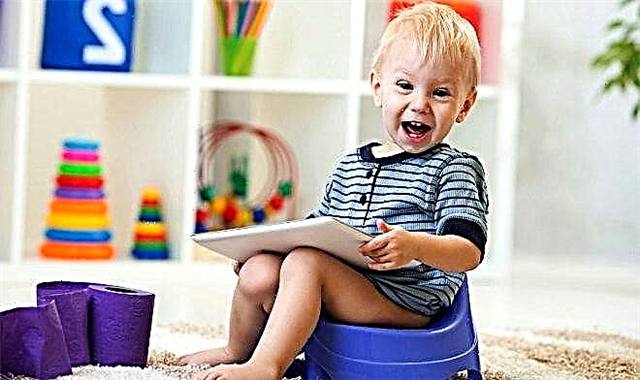
Slow method
It differs from the universal one only in that the child is left without the usual diaper only in the first half of the day, before lunchtime. The rest of the time, the baby can lead a normal life. This method has its advantages - the stress associated with the transition to new living conditions will be minimal for both the baby and his parents. At any time, parents can refuse to study, postpone it "for later" if the baby is sick or naughty.
However, it is not worth waiting for the result quickly - even after learning what the toilet construction is for, the baby can sometimes urinate in his pants.
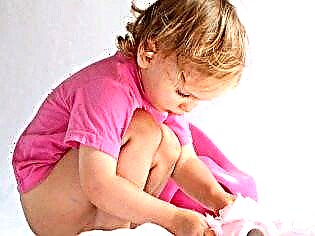
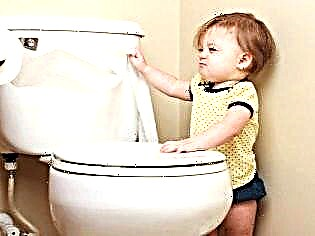
Tips
There are other methods that parents can combine, use one by one or in combination with each other at their discretion, depending on the characteristics of the child's character, his development and readiness to comprehend a new skill. At 2 years old, babies are very smart, and if not one method, then another will certainly be effective.
- You can place the potty in the toilet and go to the toilet with your child. In this case, you can open the tap, because the sound of water makes any person want to pee as soon as possible. This is where a pot standing idle comes in handy.
- If the child is afraid of the very planting on the potty, plant it on this object right in the clothes, without taking off his pants. When the baby learns to sit here without fear, gradually begin to take off his pants and panties. And only after that, proceed to the main part of the training.
- Do not leave your child alone during his “meeting”. The presence of adults is necessary so that the baby does not fall from the pot, get injured, or get scared. In addition, learning goes much faster if the child is interested and motivated for the result. In the process, tell him stories, sing songs, read his favorite rhymes.
- Adult men in the family can take boys to the toilet, and women can take girls with them. Seeing how adults relieve themselves, the child will be more sympathetic to the pot, he will understand that this is completely natural. In addition, children love to imitate adults - this must be used skillfully.
- With the same success, younger children copy the behavior of older ones. If a child has a brother or sister who goes to the potty independently, it can be considered that the parents are very lucky.
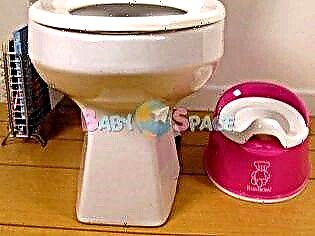
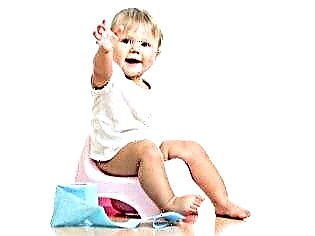
A child who at 2-2.5 years old refuses to go to the potty does not need medical help, as some think. He needs participation and understanding of his childish position. A pediatrician and psychologist should only be consulted if the baby does not recognize the pot after he turns 3 years old.

Toilet and sanitation training will be easier and easier if the parents think through some important details.
- Pot. It should be comfortable and bright. For boys - with an oval hole, and for girls - with a round one. The best material is environmentally friendly plastic, since the enamel pots, which half of today's adults have grown up on, are very cold and unpleasant, moreover, they require more thorough washing and maintenance. The pot should have a small back, a stable base.
It is better to refuse pots with music and a built-in video player - the baby should not perceive the toilet item as entertainment, otherwise the learning process may take a long time. Few kids want to relieve themselves in an interesting and exciting toy.
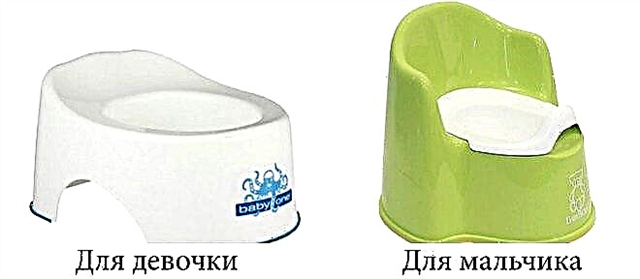
- Cleanliness. The child must understand that walking dirty and wet is bad, unpleasant and unacceptable. Therefore, training him to potty must begin with training to cleanliness. A child who is accustomed to spending hours in a dirty diaper will find it difficult to teach how to relieve in a certain place.
- The reaction of the parents. When a baby starts to walk without a diaper, some parents instinctively seek to "catch" him just when the process of emptying the intestines or bladder is just beginning. The frightened toddler is dragged to the pot. This is a big mistake. The baby will still not be able to stop urination, but the fear of physiological natural actions can creep deep into his soul and subconscious. It is much easier and more correct to remove an expensive light carpet from the room while teaching a child to toilet skills, always keep a bucket of water and a rag ready to eliminate the consequences of children's "mistakes".
- Timing. Try to time your training in the coming summer, late spring, or early fall. When it's warm outside, it is much easier to take a child out for a walk without a diaper, to walk in minimal clothes, which will also dry much faster after washing.
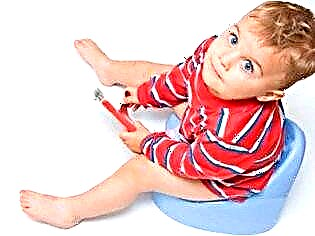
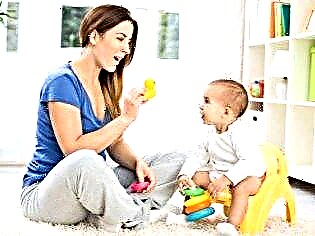
And finally, I would like to note that you cannot compare your child with other children. If a neighbor's boy has been walking on a potty perfectly since a year and a half, and your offspring, at 2.5 years old, does not even want to approach this device, this is not a reason for worry. Mom cannot be blamed for the pedagogical neglect of the baby.
For information on how to potty train a child, see the next video from Dr. Komarovsky.



